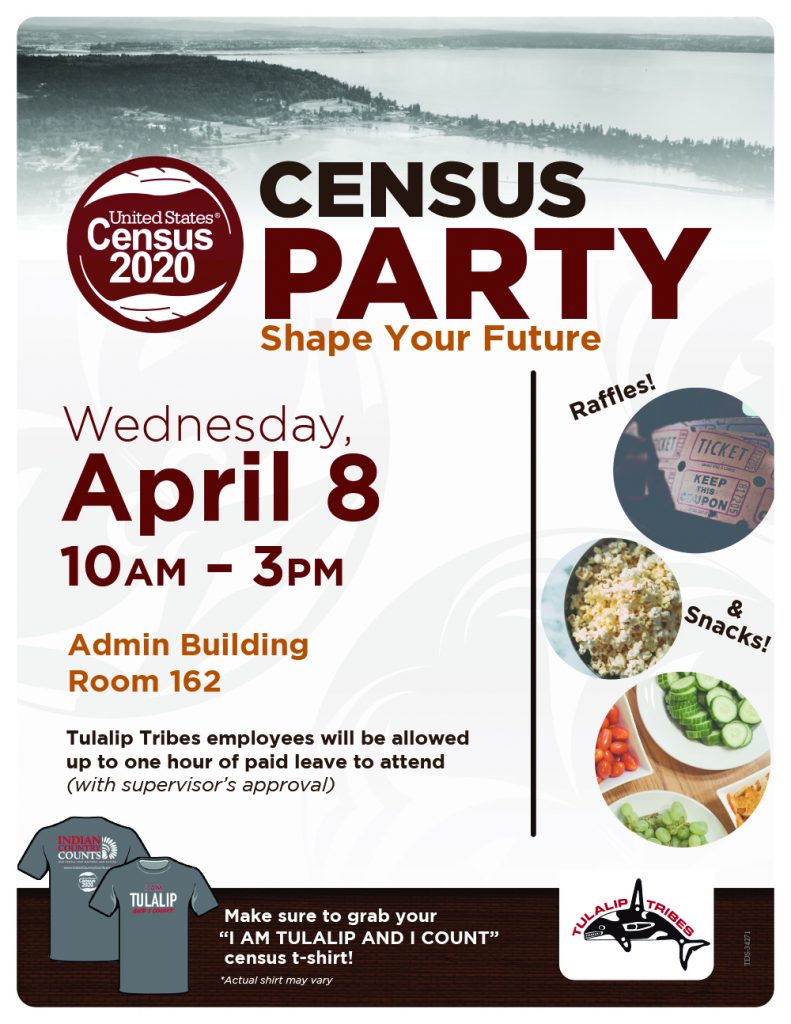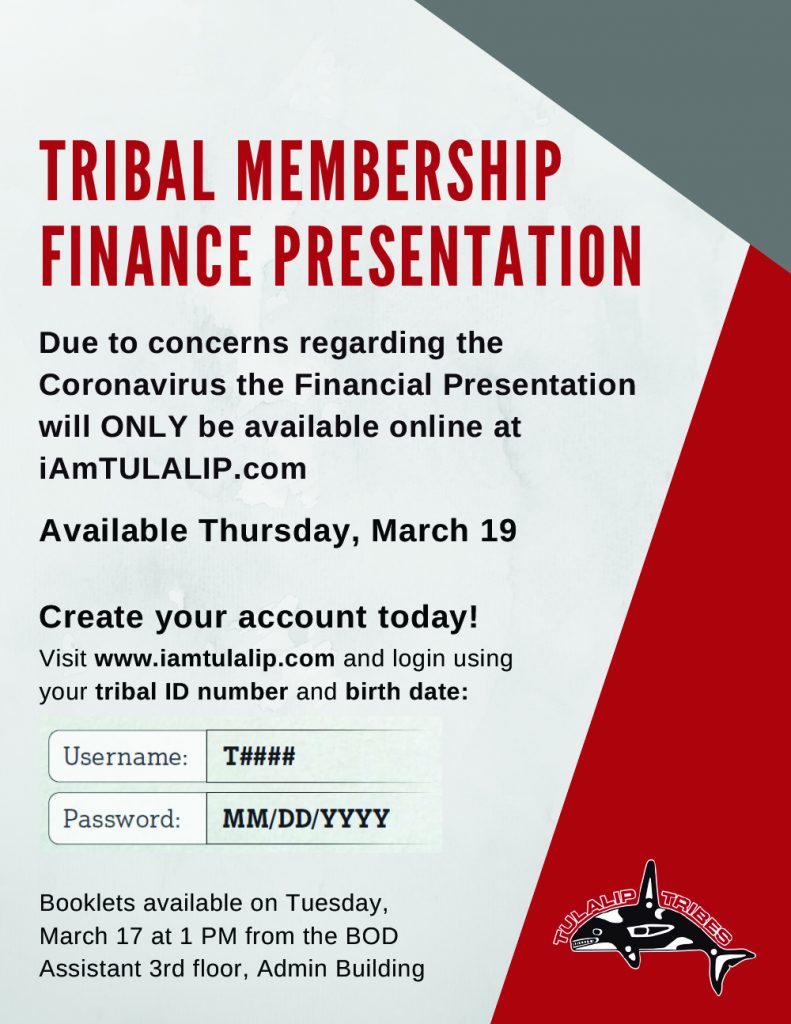Staff will re-evaluate and re-schedule after school resumes.
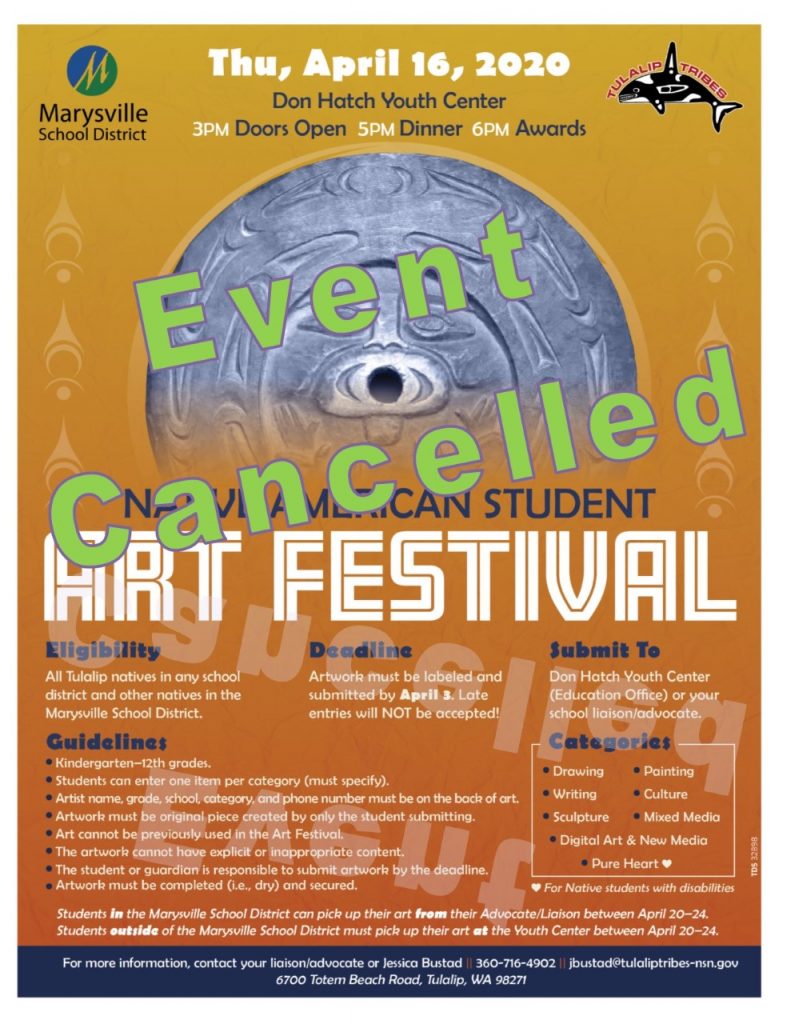
syəcəb
Staff will re-evaluate and re-schedule after school resumes.

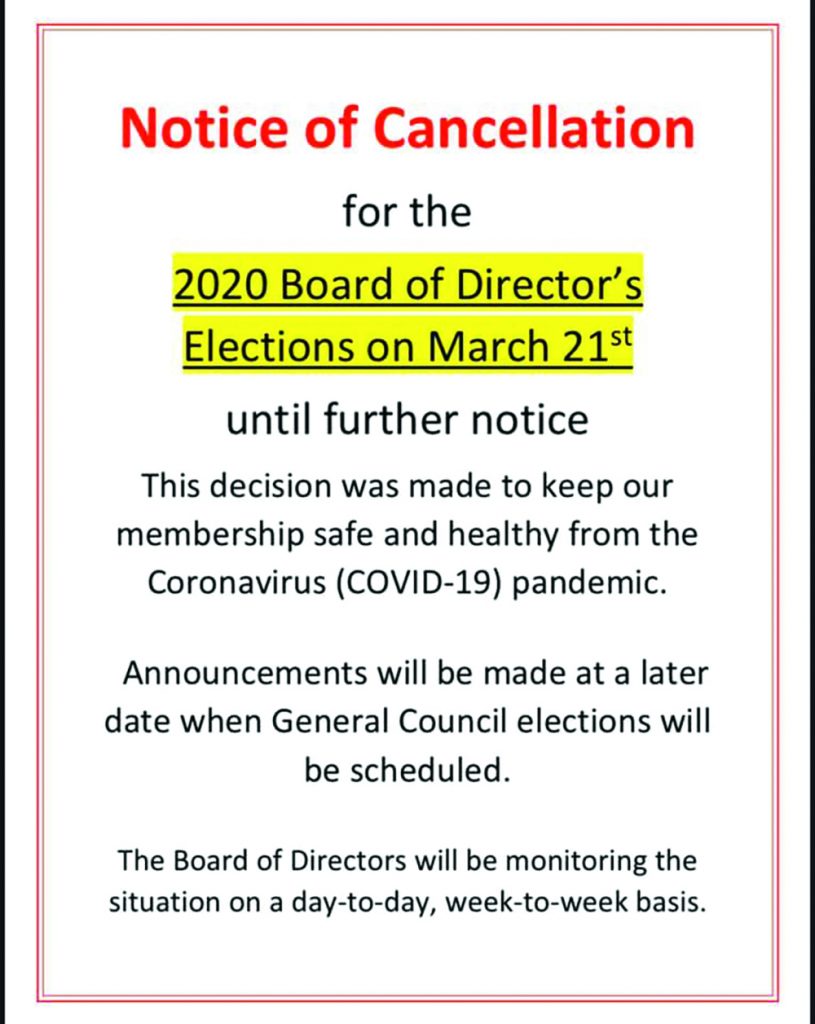
Dear Tulalip Clinical Pharmacy customers: Several patients expressed concerns about medication shortage due to supply chain issue in China (China supplies a significant amount of drug ingredients to the world). I want to assure you that we are currently very well stocked on most medications. It’s our standard operating practice to overstock pharmacy at the beginning of the year , partly to take advantage of volume discount and partly to protect us from situation like this. I have no doubt we will be able to provide uninterrupted pharmacy service beyond this challenging situation.
To reduce the chance of COVID-19 transmission at the pharmacy and to ensure safety for everyone, we have implemented the following precautionary measures:
What you can do to help:
Please don’t hesitate to contact me or my staff if you have any concerns. We will do our very best to accommodate your prescriptions needs.
Kelvin Lee
www.tulalipclinicalpharmacy.com

Please use the following link to download the March 14, 2020 issue of the syəcəb
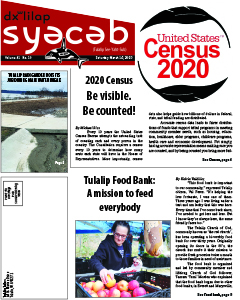

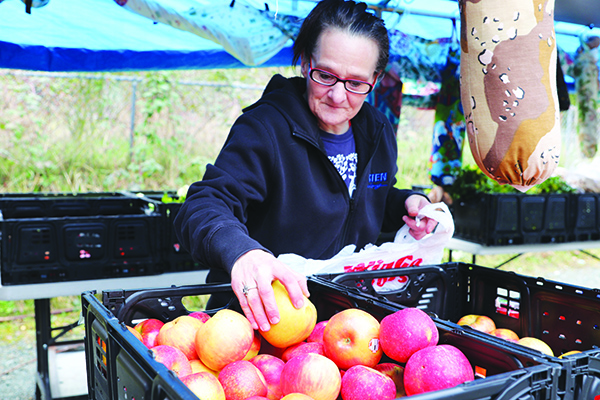
By Kalvin Valdillez, Tulalip News
“This food bank is important to our community,” expressed Tulalip citizen, Val Perez. “It’s helping the less fortunate, I was one of them. Three years ago I was living under a tent and am lucky that this was here. Every time that I’ve come back since, I’ve needed to get less and less. But I know they’re always here, the same friendly faces too.”
The Tulalip Church of God, commonly known as ‘the red church’, has been operating a bi-weekly food bank for over thirty years. Originally opening its doors in the 80’s, the church has made it their mission to provide fresh groceries twice a month to those families in need of assistance.
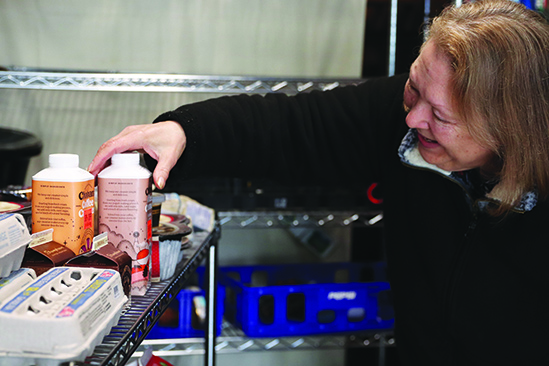
The food bank is organized and led by community member and lifelong Church of God follower, Tamara ‘Tami’ Morden who explained that the food bank began due to other food banks, in Everett and Marysville, turning away people who lived outside of their cities, which namely included Tulalip. Tamara took the reins nearly a decade ago and has passionately served her community, ensuring the inspiration and mission behind the food bank never falters.
“We are available to everybody in need of food,” said Tami. “I’m here to feed everybody. I don’t care if you’re from Everett or wherever, we don’t turn people away. If I feed one person, I’m good. If I feed a bunch of people, I’m better.”
Various items are offered at the food bank including selections of protein such as chicken and ground turkey; fresh produce like onions, potatoes, apples and celery; baked goods ranging from French bread to desserts; canned foods; dairy items; and of course plenty of mac and cheese.
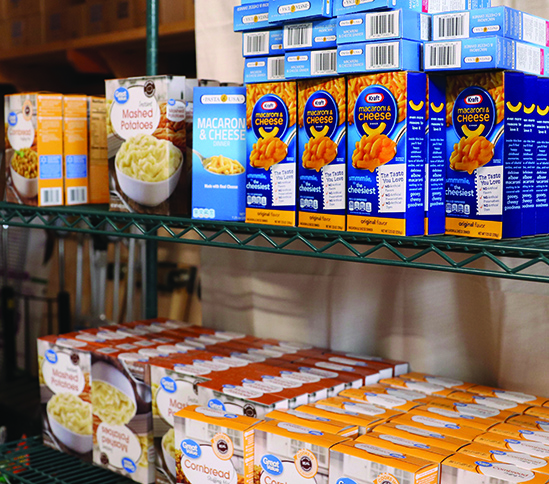
“We get our donations from Albertsons, WinCo, Northwest Harvest and the Tribe brings donations too,” said Food Bank volunteer and Church goer, Charlotte Petrie. “We try to have a selection of protein, vegetables, dairy and we order some goodies from Costco. We try to always have cereal available, that’s important. We’re here for everyone. We’re hoping more people will come and get some food, so no one goes hungry. I enjoy helping the people. We have a great crew and we have fun. If anyone would like, please join us. We’re always in need of volunteers.”
The Tulalip Food Bank is open to all. Their doors are open every-other-week on Tuesdays between the hours of 10:30 a.m. and 4:30 p.m., with the next event occurring on March 17. As always, volunteers and donations are graciously welcome. For more information, please contact Tami at (425) 760-6241.
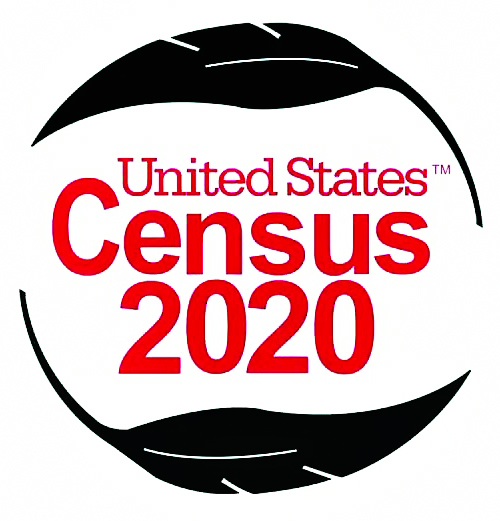
By Micheal Rios, Tulalip News
Every 10 years the United States Census Bureau attempts the astounding task of counting each and every person in the country. The Constitution requires a census every 10 years to determine how many seats each state will have in the House of Representatives. More importantly, census data also helps guide how billions of dollars in federal, state, and tribal funding are distributed.
Accurate census data leads to fairer distributions of funds that support tribal programs in meeting community member needs, such as housing, education, healthcare, elder programs, childcare programs, health care and economic development. Put simply, having accurate representation means making sure you are counted, and by being counted you bring more federal money to Tulalip that benefits the entire reservation. Each person counted equals $3,000 in funding for our community.
“The 2020 Census is our chance to be visible, to be heard, and for our tribal nations to be recognized,” stated Kevin Allis, CEO of the National Congress of American Indians. “Being counted means standing up for yourself, your family, and your tribal community. Our people, our nations, and our future depend on each one of us to complete the census form. This is our opportunity to make a difference – the time is now. Let us join together and make 2020 the year that Indian Country counts!”
The 2020 Census marks the 24th iteration of the census since its inception in 1790. Native American citizens weren’t counted in the census as a separate population category for the first time until 1860. Despite the lengthy history and expansive impact of the U.S. census, Native Americans have historically been undercounted.
An estimated one in seven Native Americans living on tribal lands were not counted in the last census back in 2010, according to the Census Bureau’s own audit. Making Native Americans – at 2% of the U.S. population – the group most likely to be missed.* This inaccuracy costs millions of annual tax dollars to Indian Country that would otherwise be used to improve public programs such as schools, roads, and other forms of critical public infrastructure.
Not being counted hurts Indian Country and on the local level, hurts Tulalip. Tribal leaders and the Census Bureau hope that by focusing on designated hard-to-count communities and improved technology will help produce a more accurate count this year. For the first time ever, you will be able to respond to the census online.
“I want to tell every [Native American] to be counted as an act of rebellion because this census is designed not to count you,” declared Natalie Landreth (Chickasaw), a senior attorney for the Native American Rights Fund, to Indian Country Today. “It is designed for you to not have congressional districts. It is designed for you to not have federal monies. Make yourself heard because they don’t want to hear from you.”
By April 1, 2020, all Tulalip households will receive an invitation to participate in the census. You will then have three ways to respond: online, by phone, or by mail. Making the 2020 Census as mobile and convenient as possible.
The average time is should take a household to complete the census form is only about ten minutes. Taking those critical minutes to be counted means standing up and being visible for yourself, your family, and your tribal community.
Your responses to the 2020 Census are confidential and protected by law. Personal information is never shared with any other government agencies or law enforcement, including federal, local, and tribal authorities.
It cannot be understated that accurate census data is essential for policymaking and funding for public roads and many other types of essential infrastructure. A lot of our federal programs are dependent on the numbers generated from the census. It impacts education. It impacts economic development. It impacts tribal housing. It impacts health care.
Now is the time to encourage family, friends, and neighbors to spread the work and participate in the 2020 Census. Don’t let the government short change Indian Country or Tulalip a single dollar of federal funding. Be visible and be counted!
For more information, visit www.census.gov
*Source: The Guardian – Native Americans fight to be counted in U.S. census
___________________________________________________________
How to be counted as Tulalip
For many reasons, it is important that Native households be counted in the 2020 Census. This depends on the race of “Person 1” or the first person listed on the census form. If that person says he or she is Native, then the household will be counted as one with a Native “householder”.
Saying that you’re American Indian or Alaska Native on the 2020 Census form is a matter of self-identification. No proof is required. No one will ask you to show a tribal enrollment card or a certificate of Indian blood.
To be counted as a Native citizen who is part of the Tulalip Tribes, you must complete two simple steps. Frist, check the box for American Indian or Alaska Native. Second, make sure to write in your enrolled tribe. For Tulalip tribal members this means writing in Tulalip Tribes.
As far as the Census Bureau is concerned, the listing of a person’s tribe is entirely a matter of what the person writes in. No proof of the person’s relationship to that tribe is required. It’s all a matter of self-identification.
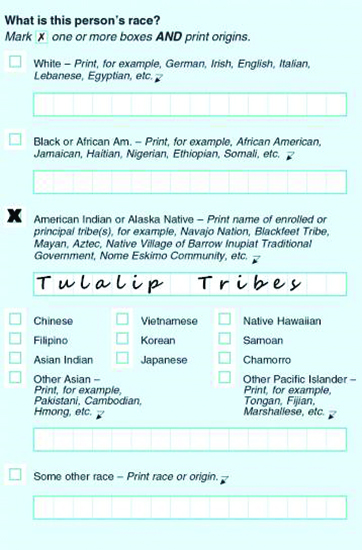
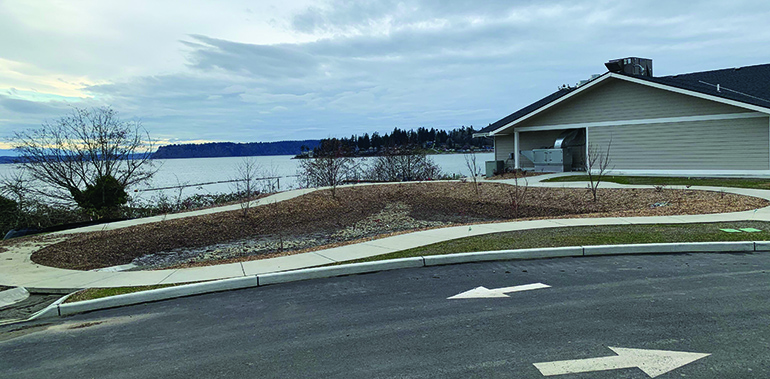
By Kalvin Valdillez, Tulalip News
Sometime during the night of March 9, a main water break occurred directly above the Tulalip Senior Center causing a water outage at the senior center, the senior apartments, as well as the entire Battle Creek neighborhood and all along Totem Beach Road. Water gushed into the newly extended parking lot and threatened damage to the recently remodeled senior center.
According to Tulalip Natural Resources, the pipe burst is believed to be caused by a combination of cold weather and frequent vehicle traffic over the pipeline. The line break proved to be an inconvenience to many surrounding residents and elders who rely on the waterline, as they went without water for the majority of the following day. However, the Senior Center, Tulalip Utilities, the Tribe’s Natural Resources Department, and most importantly local marine life, are a bit relieved in the fact that a bad situation didn’t take a turn for the worse thanks to an implementation of a natural filtration system to the senior center remodel.
“The rain garden saves the day!” exclaimed Valerie Streeter, Tulalip Natural Resources Storm Water Planner. “They said the water went underneath the pavement and some went into the storm drains, but it was too much. So then it went into the rain garden and the overflow was stopped by a silt fence that caught all the silt – the water and mud pulled out of the bank.”
By design, rain gardens collect storm water runoff from rooftops, nearby streets, lawns and driveways, absorbing and filtering out harmful pollutants like oil, metal, paint, pesticide, and fertilizer. Rain gardens effectively remove 90% of chemicals and 80% of sediments from storm water runoff, preventing those containments from entering our ecosystem, according to the Environmental Protection Agency.
“It would’ve been bad if that water would have made it to the bay,” Valerie said. “It’s kind of by luck that the burst happened there. But even before this incident, with all the rain we’ve been getting, the rain garden has been taking that water and managing it, acting like the sponge it needs to be, and sending that clean water out to the bay.”
Over recent years, the Tribe has taken proactive measures by building several rain gardens and bioretention swales throughout the reservation, including at the Tribal Administration building parking lot and along busy roads. Throughout the senior center’s remodel planning stages, the rain garden was said to be a touchy subject and debated if it was an immediate necessity. Thankfully the decision to include it in the first phase of renovations proved to be, in hindsight, beneficial to the fish and aquatic life who frequent the waters of the bay.
Valerie explained, “If you want healthy fish and good water, not just marginal water, you want that water to go through the plants and the soil because that’s what naturally happens; it goes through the soil, cleans it, makes organic carbon and heads out, and then you’ll have water that really supports fish.”
“A lot of the pollution is car related,” she continued. “There’s zinc on the tires, and zinc is a heavy metal that will kill either fish or their food. And then you have copper in the brake pads, and that affects the smell of the salmon. The salmon use their sense of smell to find their way back to the home stream, and if they see a predator they secrete this chemical and the other fish smell it and sink down in the water to the avoid the predator. You add copper, even a little bit above the baseline of it, it doesn’t work. The other fish don’t get the message, they don’t sink down and the predator eats them. And then you also have the oil drips that coats gills and eggs so they don’t get oxygen.
So the sediment, had the rain garden or the silt fence not have been there today, and that waterline breaks, it would’ve gone into the building and the bay. It probably would’ve smothered things. If it had been a stream or where salmon eggs were, all that sediment would cover it and then you couldn’t have that oxygen exchange and the eggs would die. It would clog the gills of anything living out there.”
In addition to preventing irreversible harm to the waterways, salmon and aquatic creatures inhabiting Tulalip Bay, the rain garden also lent a helping hand to the Utilities and Public Works departments by gathering all the excess water from the burst, allowing the crew to quickly work on fixing the busted pipe and reconnecting the waterline for the community. Unfortunately, the water break did cause damage to the center’s parking lot, but the recently remodeled building did not receive any large water damage from the burst.
Although in its infancy stage, the native plants still have yet to be planted, the rain garden came through in a big way for Tulalip by halting mass pollution to the bay. Valerie believes that once complete, the garden will be a beautiful and purposeful addition to the senior center.
“It’s going to be really pretty once it’s planted,” she expressed. “The other idea is they’re going to have a bench so the elders can sit, relax and enjoy the rain garden. There will be all kinds of birds and animals that come to visit. Benches, berries, the bay and a beautiful landscape that’s functional for the environment. That sounds like a wonderful scenery.”
